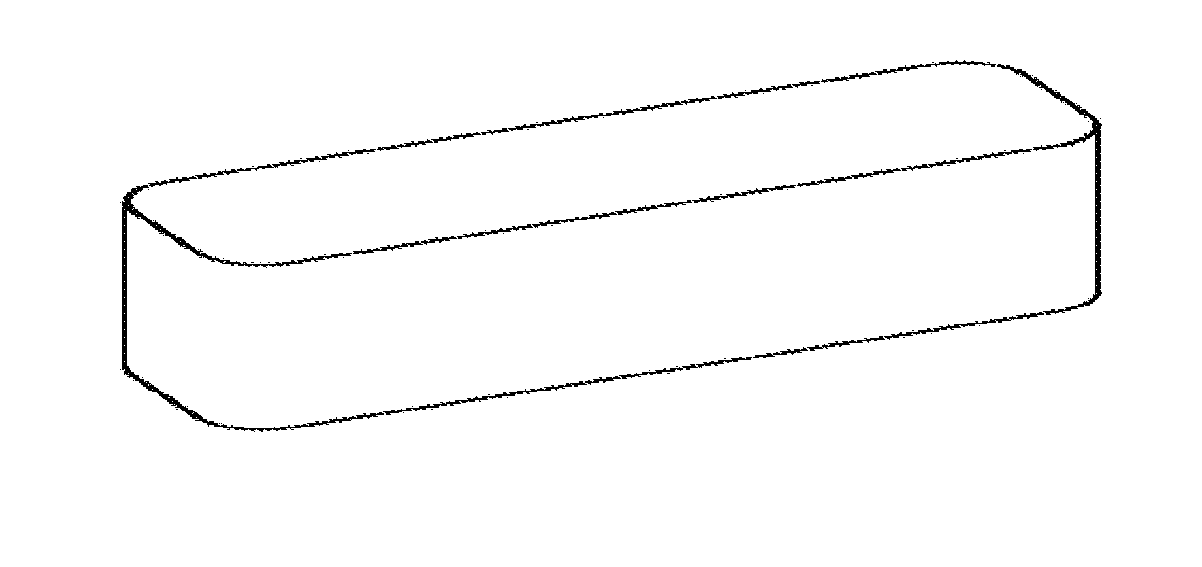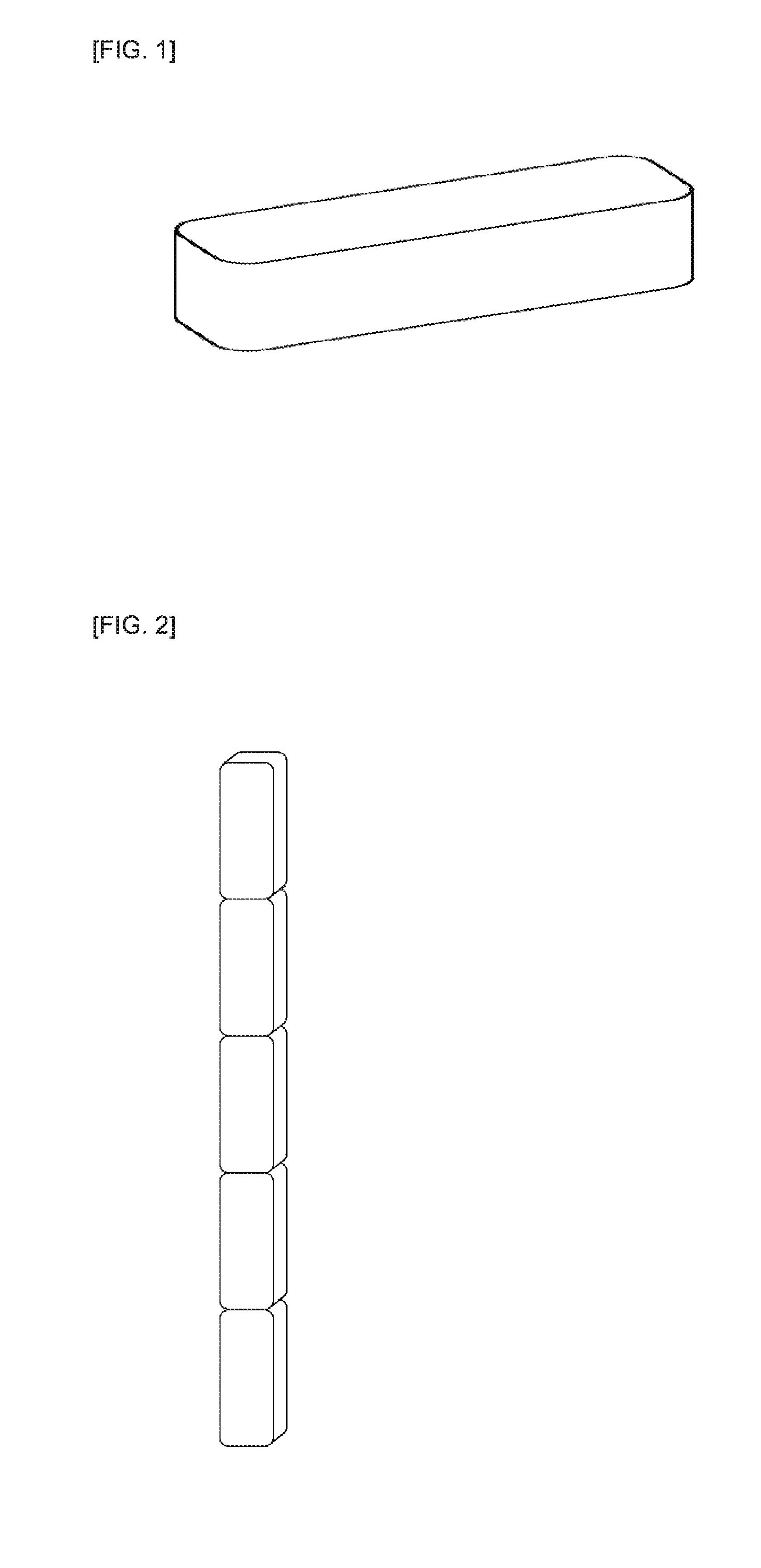Method for producing platinum group metal or platinum group-based alloy
a platinum group metal and alloy technology, applied in the field of platinum group metal or platinum group-based alloy production, can solve the problems of large economic loss in the production of very degrading material yield, easy to break down the molded body, etc., and achieves improved material yield of expensive platinum group metals or expensive platinum group-based alloys, improved strength, and effective suppression of scattering of raw materials during melting
- Summary
- Abstract
- Description
- Claims
- Application Information
AI Technical Summary
Benefits of technology
Problems solved by technology
Method used
Image
Examples
example 1
[0060]Example 1 represents an example of the description above (best mode for carrying out the invention).
[0061]With regard to the density of the molded body calculated from the dimensions and the mass, the relative density was 52%. The density of the sintered body was 74%. Using the sintered body as the raw material rod, a molten ingot having a diameter of about φ35 mm×a length of L 150 mm was manufactured.
[0062]When visual observation was conducted during the melting (under a pressure of 1.1×105 Pa), the scattering phenomenon was not at all observed. The reduction in mass of the molten ingot from the raw material preparing step was 0.6% or less. Further, after the sintering until the melting was completed, the raw material rod was not broken or exfoliated.
[0063]Almost no scattered material was left in the furnace after the melting, and attachment of the scattered material to the water-cooled copper crucible was not recognized.
example 2
[0064]In Example 2, the molded body was manufactured as in the case of Example 1. The molded body was substantially in the shape of a rectangular parallelepiped having dimensions of 20 mm×20 mm×50 mm with corners having an R of 2 mm. Such molded bodies were individually sintered without being stacked to manufacture sintered bodies of about 16 mm×16 mm×44 mm. The sintered bodies were placed on a boat-shaped water-cooled copper crucible and were molten by vacuum plasma melting to manufacture a molten ingot of about 15 mm×30 mm×100 mm. The pressure during the melting was adjusted to be 5×10−1 Pa (Ar).
[0065]In visual observation during the melting, occasional scattering was observed. A small amount of the scattered material was left in the furnace after the melting, with part thereof being attached to the water-cooled copper crucible.
[0066]The reduction in mass of the molten ingot was 2.5%. Further, with regard to the shape of the molten ingot, the bottom portion was approximately smoot...
PUM
| Property | Measurement | Unit |
|---|---|---|
| pressure | aaaaa | aaaaa |
| melting point | aaaaa | aaaaa |
| melting point | aaaaa | aaaaa |
Abstract
Description
Claims
Application Information
 Login to View More
Login to View More - R&D
- Intellectual Property
- Life Sciences
- Materials
- Tech Scout
- Unparalleled Data Quality
- Higher Quality Content
- 60% Fewer Hallucinations
Browse by: Latest US Patents, China's latest patents, Technical Efficacy Thesaurus, Application Domain, Technology Topic, Popular Technical Reports.
© 2025 PatSnap. All rights reserved.Legal|Privacy policy|Modern Slavery Act Transparency Statement|Sitemap|About US| Contact US: help@patsnap.com


